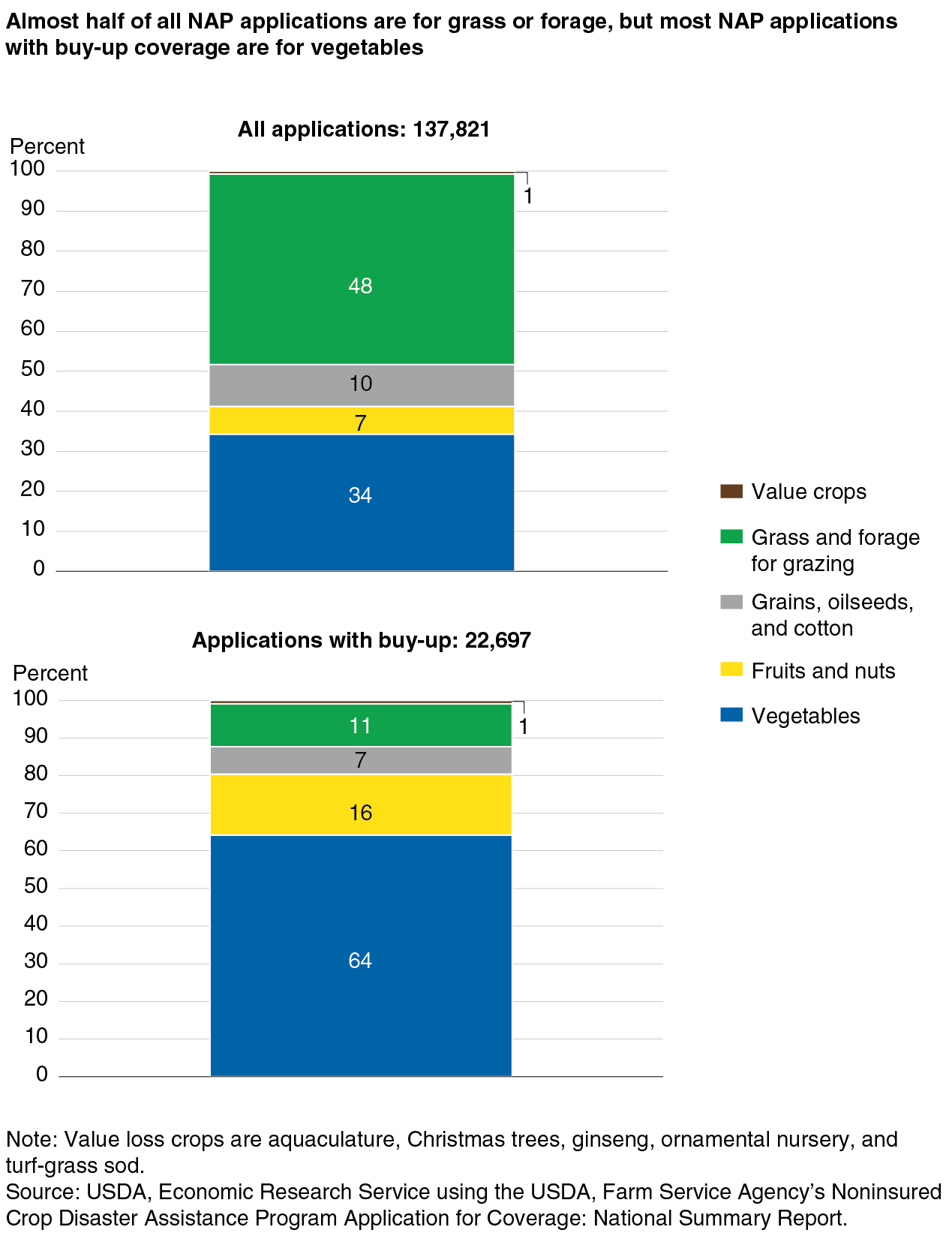Applications for the Noninsured Crop Disaster Program Increased After the Agricultural Act of 2014
- by Ashley Hungerford and Gregory Astill
- 7/3/2017
USDA operates a number of Federal crop insurance and disaster aid programs to mitigate the downside risks inherent to agricultural production (e.g., damaging weather, price, or yield shocks). However, crop insurance underwritten by the USDA Risk Management Agency is only available to certain commodities in specified areas. Producers have been able to enroll in the Noninsured Crop Disaster Assistance Program (NAP), which is managed by the USDA Farm Service Agency, since 1994. This program insures producers in situations when Federal crop insurance is unavailable to them due to their crop or location.
Before the Agricultural Act of 2014, NAP provided only catastrophic coverage (CAT), which guarantees 50 percent of the approved yield—based on the producer’s historical yields—at 55 percent of the average market price (NAP Basic). There is no premium for CAT, only a service fee. Now, producers can instead purchase coverage up to 65 percent of the approved yield at 100 percent of the average market price (NAP Buy-Up) by paying a premium along with the service fee. If the producer is classified as limited-resource, socially disadvantaged, or beginning, then the premium is reduced by 50 percent, and the service fee is waived. Previous to the Agricultural Act of 2014, only limited-resource producers qualified for the service fee waiver.
Applications for NAP increased from 66,000 to 138,000 between 2014 to 2015, and the number of producers who enrolled and qualified for a service fee waiver increased from 8,000 to over 16,000. In 2015, the first year NAP Buy-Up was offered, 16 percent of policies purchased buy-up coverage. Excluding grasses and other forage crops for grazing, most of which do not qualify for NAP Buy-Up, 28 percent of policies purchased buy-up coverage.
The largest share of applications (48 percent) was for grasses and other forage crops for grazing, while vegetables had the second highest share of applications at 34 percent. The majority of applications for NAP Buy-Up is for specialty crops, with 64 percent of applications with buy-up coverage for vegetables and 16 percent for fruits and nuts.
Overall, recent changes to NAP appear to be the motivation for expanded enrollment in the program and resulted in thousands of specialty crop producers who purchased NAP Buy-Up for their crops.
This article is drawn from:
- Hungerford, A., Astill, G. & Effland, A. (2017). Changes to the Noninsured Crop Disaster Assistance Program Under the Agricultural Act of 2014: Their Potential Risk Reduction Impacts. U.S. Department of Agriculture, Economic Research Service. EIB-172.


